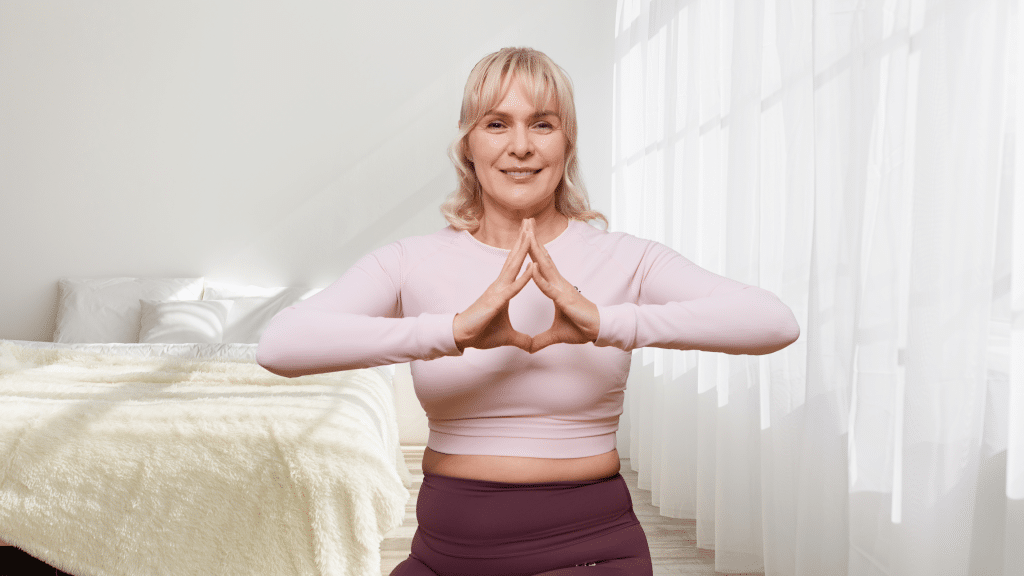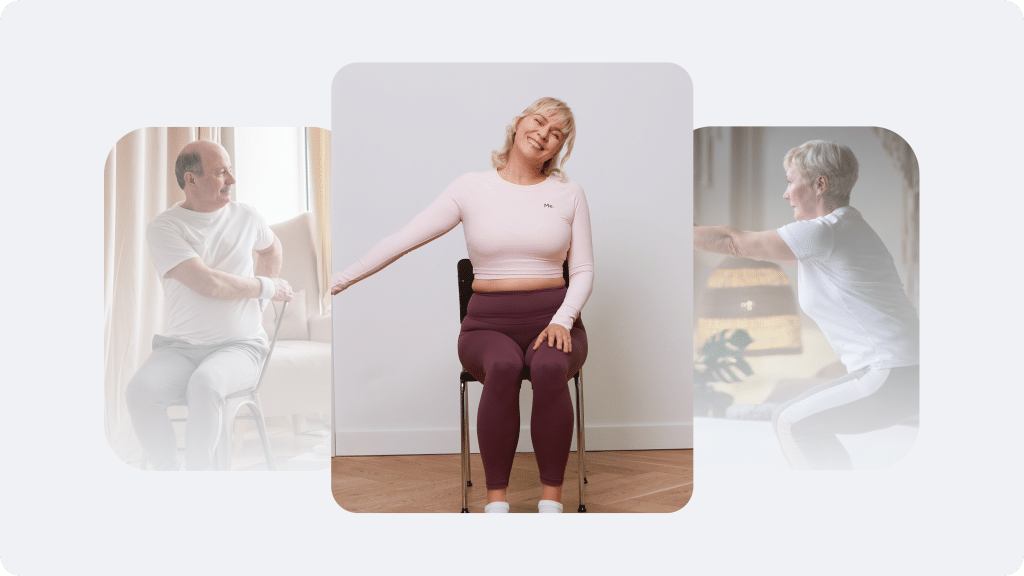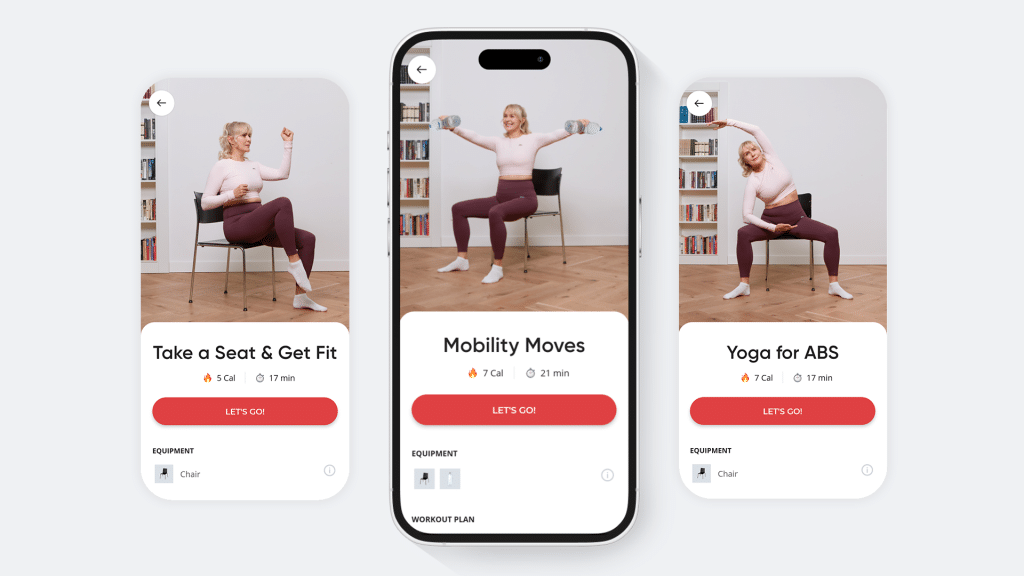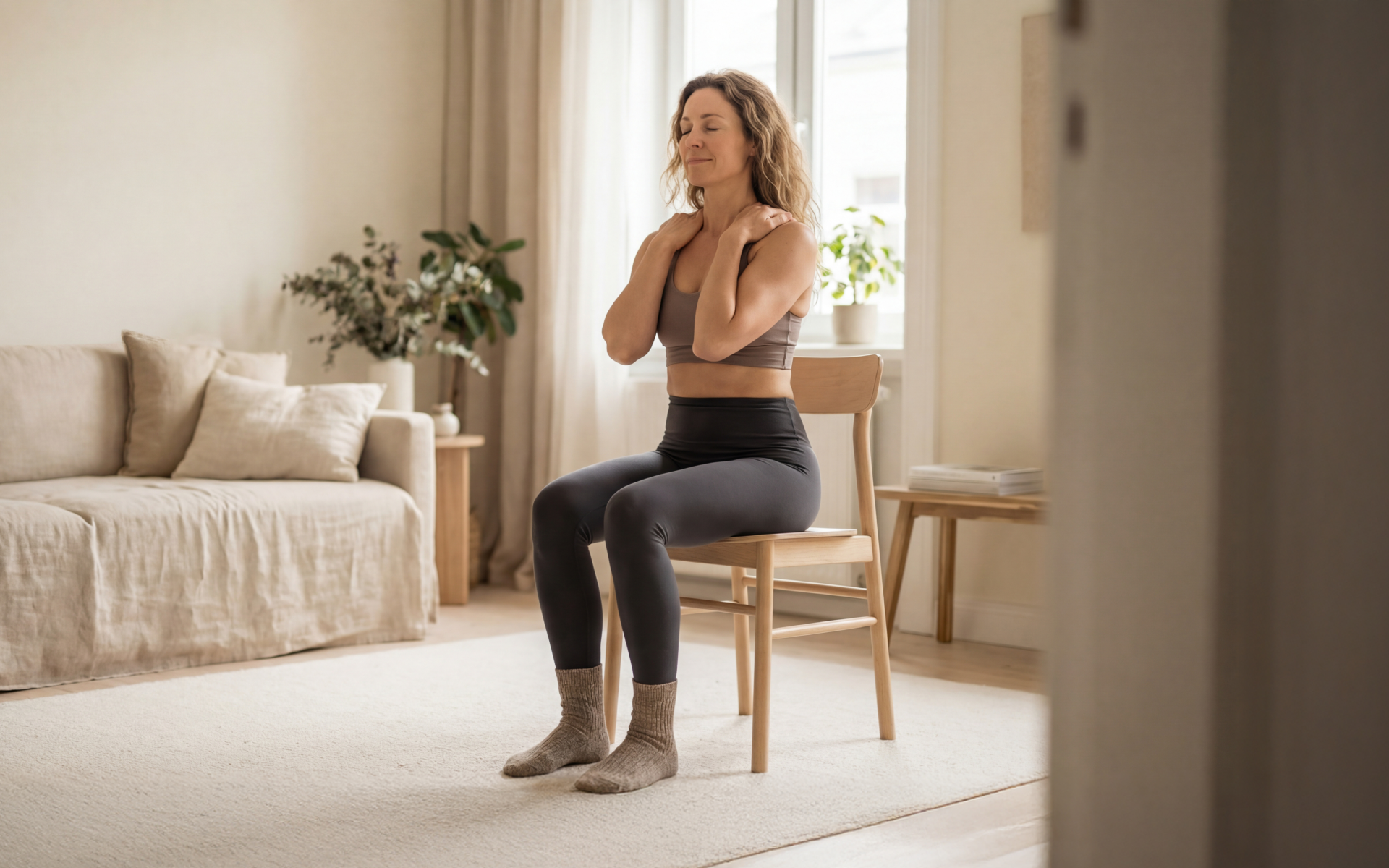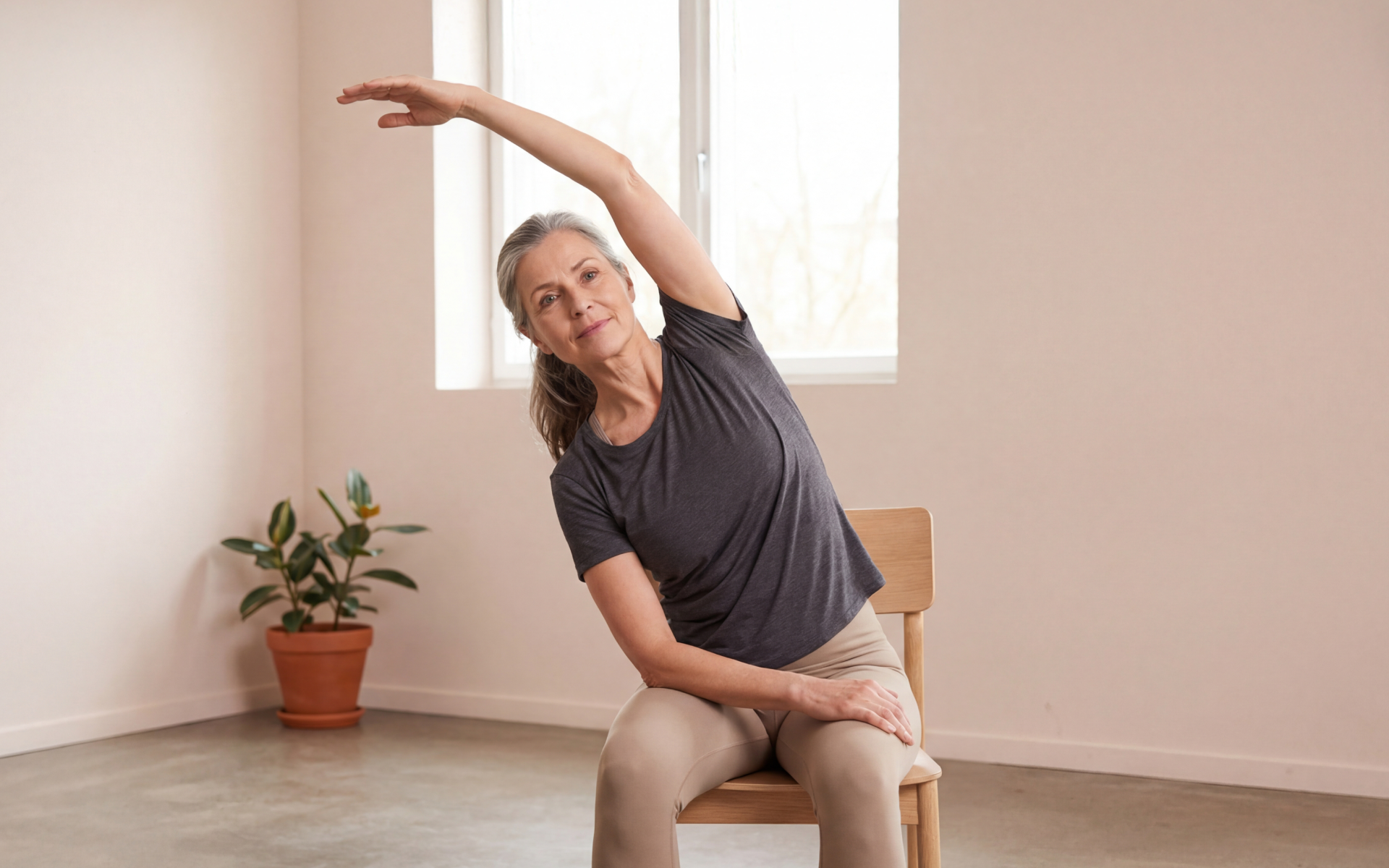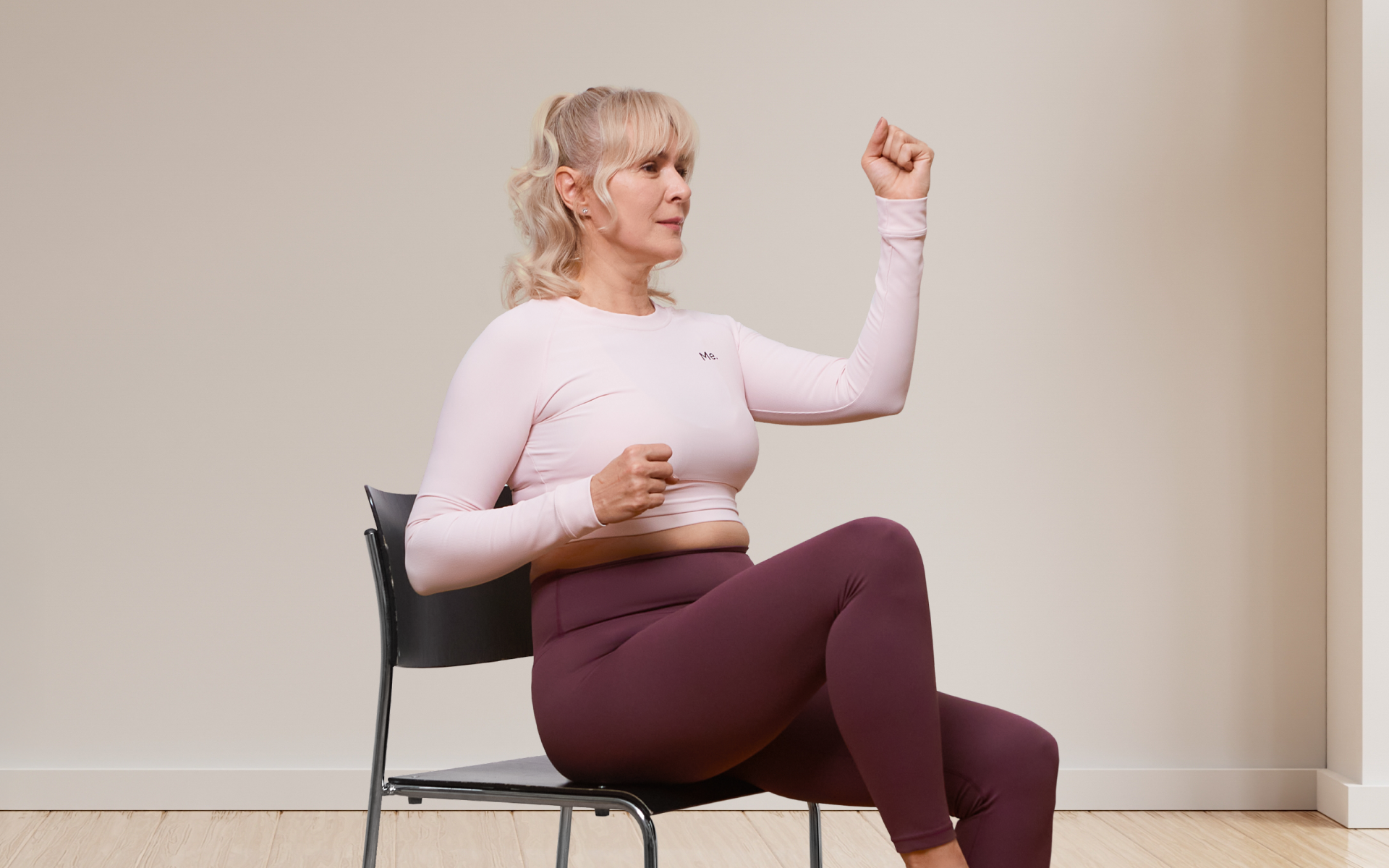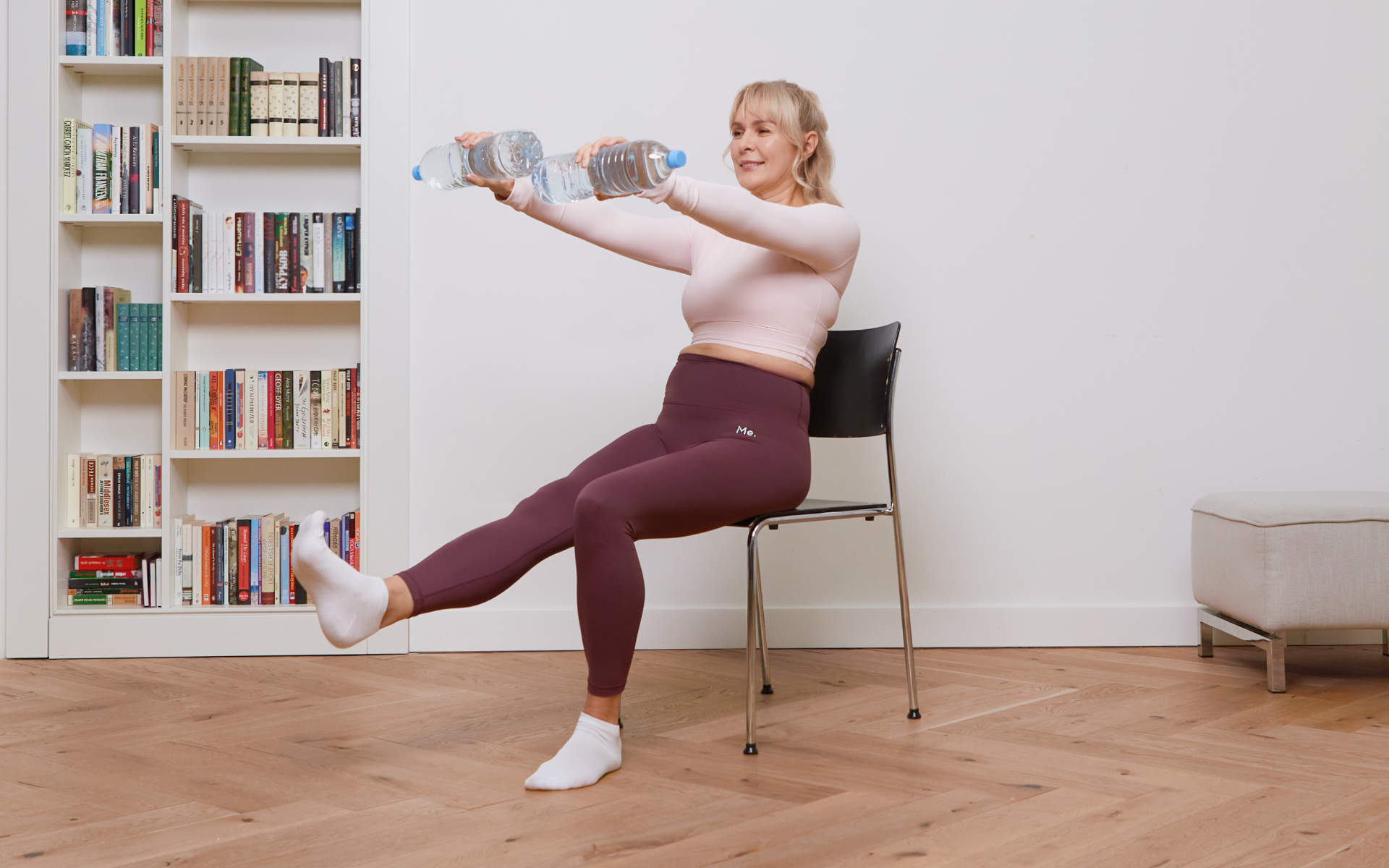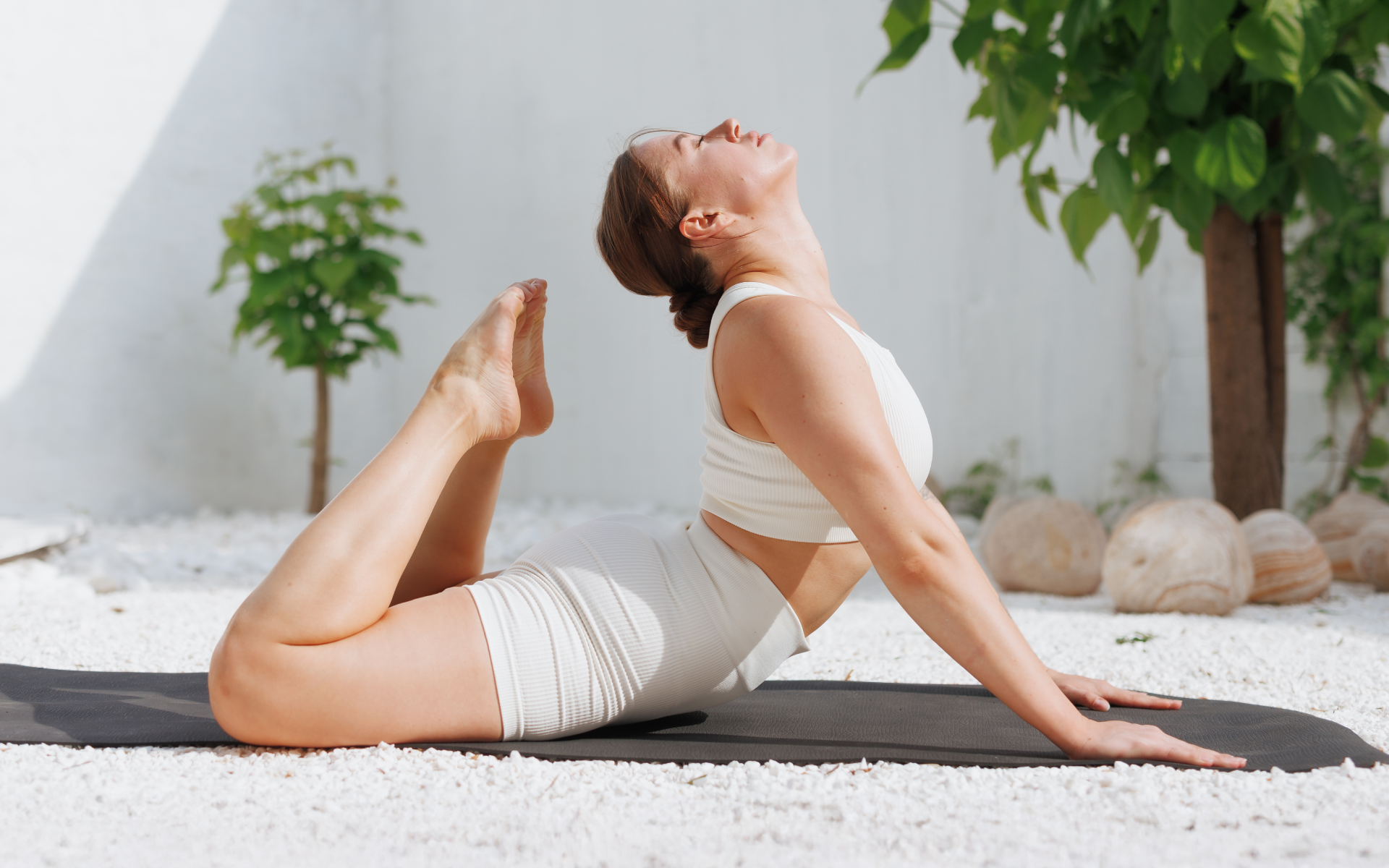Holistic living is a way of life that is focused on achieving balance and harmony in every aspect of our being – physical, mental, emotional, and spiritual. One powerful method to achieve this balance is through the practice of yoga, an ancient system of holistic healing that originated in India.
Yoga aims to unite the mind, body, and spirit through a combination of physical postures (asanas), breathing techniques (pranayama), and meditation. It’s not just a form of exercise but a transformative practice that can bring about profound changes in your overall well-being (1).
Here’s what you need to know about the power of mind-body integration in yoga:
What Is Holistic Yoga?
Holistic yoga is an approach that goes beyond just physical exercise. It combines traditional yogic practices with modern techniques to address the physical body and the mental, emotional, and spiritual aspects of our being. This form of yoga focuses on achieving balance and harmony within yourself, leading to a more holistic and integrated way of living.
The Philosophy Behind Holistic Yoga: More Than Just a Movement
At its core, holistic yoga is based on the philosophy that our bodies and minds are interconnected and should be treated as a whole. It emphasizes the importance of listening to and understanding the needs of our bodies while also working with our thoughts and emotions.
Patanjali, the author of the Yoga Sutras, believed that our mental and emotional state significantly affects physical health. This philosophy is at the heart of holistic yoga, which aims to bring about balance and harmony in every aspect of our being (2).
While there’s no single approach to holistic yoga, we can draw on various yogic principles and practices to create a well-rounded and transformative practice.
Patanjali’s 8-step path to self-realization, which is known as the Eight Limbs of Yoga, serves as a guide for holistic yoga practitioners.
These limbs include moral codes (yamas), self-discipline (niyamas), physical postures (asanas), breath control (pranayama), sensory withdrawal (pratyahara), concentration (dharana), meditation (dhyana), and enlightenment (samadhi) (2).
Each limb is interconnected and supports the others in achieving balance and harmony within yourself (3).
The BetterMe: Health Coaching app will provide you with a host of fat-frying fitness routines that’ll scare the extra pounds away and turn your body into a masterpiece! Get your life moving in the right direction with BetterMe!
Let’s discuss each of these limbs in detail (4):
Yama: The Foundation of Ethical Living
The first step in Patanjali’s path is yama, which lays out five ethical guidelines for personal conduct. These guidelines are like a moral compass that helps you live harmoniously with others and yourself. They include:
- Ahimsa (non-violence): Encourages compassion and kindness in thoughts, words, and actions.
- Satya (truthfulness): Promotes honesty with yourself and others.
- Asteya (non-stealing): Cultivates contentment and gratitude, avoiding envy or theft.
- Brahmacharya (moderation): Encourages balanced energy use, often interpreted as celibacy or self-restraint.
- Aparigraha (non-possessiveness): Teaches detachment from material possessions and greed.
These principles are essential for creating a peaceful inner and outer environment.
To practice yama in your daily life, you can start by reflecting on how you interact with others and yourself. Are your actions aligned with these principles? How can you incorporate them into your thoughts, words, and actions?
Niyama: Cultivating Self-discipline
The second step of the eight limbs is niyama, which focuses on self-discipline and personal observances. These principles help you develop a stronger and more conscious relationship with yourself, leading to personal growth and self-awareness.
The five niyamas are:
- Saucha (cleanliness): Encourages cleanliness of the body, mind, and environment.
- Santosha (contentment): Cultivates contentment and gratitude for what you have in life.
- Tapas (self-discipline): Refers to the inner fire that drives you toward your goals.
- Svadhyaya (self-study): Promotes self-reflection and learning from yourself through reading, journaling, or meditation.
- Ishvara Pranidhana (surrender to a higher power): Encourages letting go of the ego and trusting in a higher power.
Incorporating these principles into your life can help you cultivate discipline, self-awareness, and gratitude.
Asana: The Physical Practice
Asana, or physical posture, is perhaps the most well-known aspect of yoga. It’s not just about fitness, it’s about creating a comfortable seat for meditation. Through asanas, you gain strength, flexibility, and balance, which prepares your body for extended periods of stillness. This limb is where most people begin their yoga journey, but it’s just one part of the whole.
Pranayama: Harnessing the Breath
Pranayama is all about breath control. You learn to regulate your breath to enhance the flow of energy (prana) throughout your body. Techniques can be as simple as observing your breath or as complex as advanced breath retention practices. By mastering pranayama, you can calm your mind, reduce stress, and increase vitality.
Pratyahara: Withdrawal of the Senses
Pratyahara involves drawing your awareness away from external distractions. It’s like turning the volume down on the outside world so you can tune into your inner self. This practice is essential for deepening concentration and preparing for meditation. Think of it as a bridge between the outer and inner realms.
Dharana: Focused Concentration
Dharana is all about concentration. It’s the practice of holding your mind’s attention on a single point or object. This could be your breath, a mantra, or a candle flame. By practicing dharana, you strengthen your mental focus, which paves the way for a more profound meditation experience. It’s like training your mind to be a laser beam rather than a flashlight.
Dhyana: Meditation
Once you’ve mastered concentration, you move into dhyana, or meditation. This is a state of uninterrupted flow of focus. You become fully absorbed in your meditation object, which leads to a deep sense of peace and clarity. It’s not about doing, it’s about being. Dhyana allows you to experience a deeper connection with your true self.
Samadhi: Union with the Divine
The final limb, samadhi, is the ultimate goal of yoga—self-realization. It’s a state of complete absorption where you transcend the ego and experience oneness with the universe. In samadhi, you find profound joy and peace, realizing that you’re part of something greater than yourself.
The Eight Limbs of Yoga offers a comprehensive guide for holistic living and self-realization. By integrating these practices into your life, you cultivate a harmonious balance between body, mind, and spirit, which leads you toward a more meaningful existence. Remember, it’s not about perfecting each limb but about embracing the journey of growth and discovery.
How Does Holistic Yoga Differ from Traditional Yoga?
Traditional yoga is mainly focused on physical postures (asanas) and breathwork (pranayama), while holistic yoga incorporates additional elements such as meditation, mindfulness, and self-awareness. It also places a strong emphasis on the mind-body connection and how your thoughts and emotions affect your overall well-being.
In holistic yoga, there’s a deeper focus on inner work and self-discovery, rather than just the external performance of poses. This allows individuals to cultivate a deep sense of self-awareness and make meaningful connections between their body, mind, and spirit.
Here’s a table comparing the main differences between traditional and holistic yoga:
| Aspect | Traditional Yoga | Holistic Yoga |
|---|---|---|
| Approach | Primarily focuses on physical postures and breathwork | Integrates traditional practices with modern techniques to address physical, mental, emotional, and spiritual aspects |
| Focus | Emphasizes physical fitness and flexibility through asanas and pranayama | Centers on balance and harmony within yourself, promoting overall well-being |
| Techniques | Mainly involves asanas (physical postures) and pranayama (breathing exercises) | Incorporates meditation, mindfulness, and self-awareness alongside traditional techniques |
| Physical Postures | Central component that aims to improve strength and flexibility | Used as a tool for deeper understanding and self-discovery, not just physical fitness |
| Breathwork | Essential for controlling the flow of energy and enhancing physical practice | Integrated with mindfulness to connect the body and mind and manage emotions |
| Meditation | Often practiced separately or in conjunction with physical postures | Core component used to achieve deeper self-awareness and spiritual growth |
| Mindfulness | Not always emphasized in traditional practice | Strongly emphasized to cultivate a present-moment awareness and inner peace |
| Self-awareness | May develop over time through physical practice | Actively encouraged through meditation and mindfulness to foster personal growth |
| Mind-Body Connection | Recognized, but not always the primary focus | Central to holistic yoga, emphasizing the interplay between thoughts, emotions, and physical well-being |
The Benefits of Holistic Yoga for the Mind, Body, and Spirit
Holistic yoga offers a wide range of benefits for the mind, body, and spirit. It’s more than just a physical practice, it’s a way of life that promotes overall well-being and self-realization (5).
Physical Benefits
- Improved strength, flexibility, and balance through asanas
- Increased energy and vitality through pranayama techniques
- Better posture and alignment, leading to less pain and injuries
- Enhanced immunity and hormone regulation through stress reduction
Mental Benefits
- Reduced stress, anxiety, and depression through meditation and mindfulness practices
- Improved focus, memory, and concentration through dharana (focused concentration)
- Enhanced emotional intelligence through the cultivation of self-awareness and managing emotions
- Deepened sense of calm and inner peace through pratyahara (withdrawal of the senses)
Spiritual Benefits
- Greater connection with your true self by transcending the ego in samadhi (union with the divine)
- A deeper understanding of life’s purpose and meaning
- Increased compassion, gratitude, and overall sense of well-being
- Heightened spiritual awareness and growth.
How to Incorporate Holistic Yoga into Your Daily Routine
Incorporating holistic yoga into your daily routine doesn’t require drastic changes. Start small, gradually integrating these practices into your life. Over time, you’ll find that they become second nature, enriching your days with peace, balance, and fulfillment.
Here are some tips for incorporating holistic yoga into your daily routine:
Start Your Day with Mindful Breathing
Kick off your morning with some mindful breathing. It doesn’t need to be complicated. Simply take a few minutes to sit quietly and focus on your breath. This has amazing benefits for your mental health (6).
Try inhaling deeply through your nose, holding for a moment, and then exhaling slowly. This can help clear your mind and set a peaceful tone for the day. It’s a simple practice that can make a big difference in how you approach challenges.
BetterMe will shake off your mental funk, rid you of your energy-zapping habits, and help you sculpt the body of your dreams. Intrigued? Hurry up and change your life for the better!
Integrate Movement with Asanas
Incorporate yoga postures, or asanas, into your daily routine to keep your body flexible and strong. You don’t need to carve out an hour-long session.
Even a short series of sun salutations or a few standing poses can invigorate your body. Try to fit these in during breaks or whenever you feel tension building up. Consistency is key, and even a little bit goes a long way.
Practice Mindfulness Throughout the Day
Mindfulness isn’t just for the meditation cushion. Bring awareness to your daily activities and enjoy its numerous benefits (7). Whether you’re eating, walking, or working, try to be fully present.
Notice the details—the taste of your food, the rhythm of your steps, or the texture of your keyboard. This heightened awareness can transform mundane tasks into moments of gratitude and joy.
Dedicate Time for Meditation
Set aside time each day for meditation. It doesn’t need to be lengthy – even five to 10 minutes can be beneficial. Find a quiet spot, sit comfortably, and focus on your breath or a mantra.
Meditation helps calm the mind, reduces stress, and enhances your overall sense of well-being (8). Over time, it can become a cherished part of your routine.
Reflect with Journaling
End your day by journaling. Reflect on your thoughts, feelings, and experiences. This practice encourages self-awareness and growth. Write about what went well, what challenged you, and what you’re grateful for. It’s a powerful way to process emotions and insights, which helps you connect with your inner self and set intentions for tomorrow (9).
Embrace a Holistic Diet
Consider the foods you consume as part of your holistic yoga practice. Opt for fresh, whole foods that nourish your body and mind. Try incorporating more fruits, vegetables, whole grains, and lean proteins into your meals (10).
Eating consciously benefits your physical health and also aligns with the holistic principle of balance and harmony.
Read more: Best Diet for Women Over 60: Embrace Health, Vitality, and Your Best Self
Stay Connected with Nature
Holistic yoga emphasizes the interconnectedness of all things, including your relationship with nature. Spend time outdoors whenever possible. Take a walk in a park or a garden or simply sit under a tree. Nature has a calming effect and can help ground you, making you feel more connected to the world around you (11).
Yes, holistic yoga can significantly improve emotional health by promoting mindfulness, reducing stress, and enhancing self-awareness. Through practices such as meditation, breathwork, and gentle movement, holistic yoga helps balance emotions, alleviate anxiety and depression, and foster a sense of inner peace and emotional resilience (12). No special equipment is needed to practice holistic yoga. A comfortable mat is generally sufficient for most practices. However, some may choose to use props such as blocks, straps, or bolsters to enhance flexibility and support during poses, but these aren’t essential. For the best results, aim to practice holistic yoga regularly, ideally several times a week. Even short, daily sessions can be beneficial. Consistency is more important than duration, so find a routine that suits your schedule and stick with it to cultivate a lasting impact on your well-being.Frequently Asked Questions
Can holistic yoga help with emotional health?
Do I need special equipment?
How often should I practice?
The Bottom Line
Incorporating holistic yoga into your life can be a transformative journey toward achieving balance, enhancing self-awareness, and nurturing the vital mind-body connection. This practice isn’t just about physical postures, it’s a comprehensive approach to well-being that enriches every aspect of your life.
Holistic yoga supports emotional health, reduces stress, and fosters inner peace, which makes it an ideal pathway for personal growth and fulfillment.
DISCLAIMER:
This article is intended for general informational purposes only and does not serve to address individual circumstances. It is not a substitute for professional advice or help and should not be relied on for making any kind of decision-making. Any action taken as a direct or indirect result of the information in this article is entirely at your own risk and is your sole responsibility.
BetterMe, its content staff, and its medical advisors accept no responsibility for inaccuracies, errors, misstatements, inconsistencies, or omissions and specifically disclaim any liability, loss or risk, personal, professional or otherwise, which may be incurred as a consequence, directly or indirectly, of the use and/or application of any content.
You should always seek the advice of your physician or other qualified health provider with any questions you may have regarding a medical condition or your specific situation. Never disregard professional medical advice or delay seeking it because of BetterMe content. If you suspect or think you may have a medical emergency, call your doctor.
SOURCES:
- Exploring the therapeutic effects of yoga and its ability to increase quality of life (2011, ncbi.nlm.nih.gov)
- Yoga perspective on personal excellence and well-being (2023, ncbi.nlm.nih.gov)
- Get to Know the 8 Limbs of Yoga (2021, yogajournal.com)
- Health Impacts of Yoga and Pranayama: A State-of-the-Art Review (2012, ncbi.nlm.nih.gov)
- Yoga and Holistic Health (2022, researchgate.net)
- Effect of breathwork on stress and mental health: A meta-analysis of randomised-controlled trials (2023, nature.com)
- Effects of Mindfulness on Psychological Health: A Review of Empirical Studies (2011, ncbi.nlm.nih.gov)
- Meditation and Its Mental and Physical Health Benefits in 2023 (2023, ncbi.nlm.nih.gov)
- Emotional and physical health benefits of expressive writing (2018, cambridge.org)
- Eating a Balanced Diet: A Healthy Life through a Balanced Diet in the Age of Longevity (2018, ncbi.nlm.nih.gov)
- Nature and mental health: An ecosystem service perspective (2019, ncbi.nlm.nih.gov)
- Yoga and mental health: what every psychiatrist needs to know (2022, cambridge.org)

